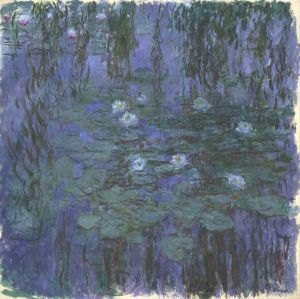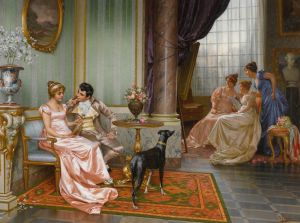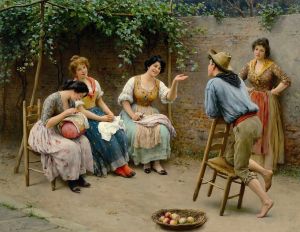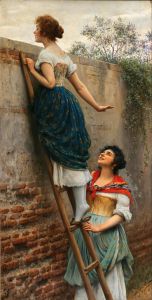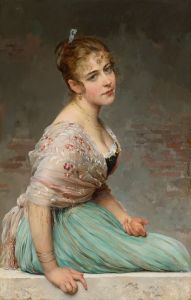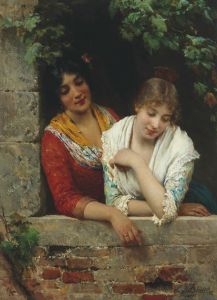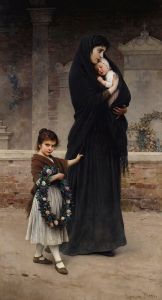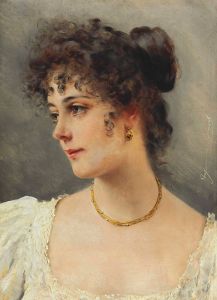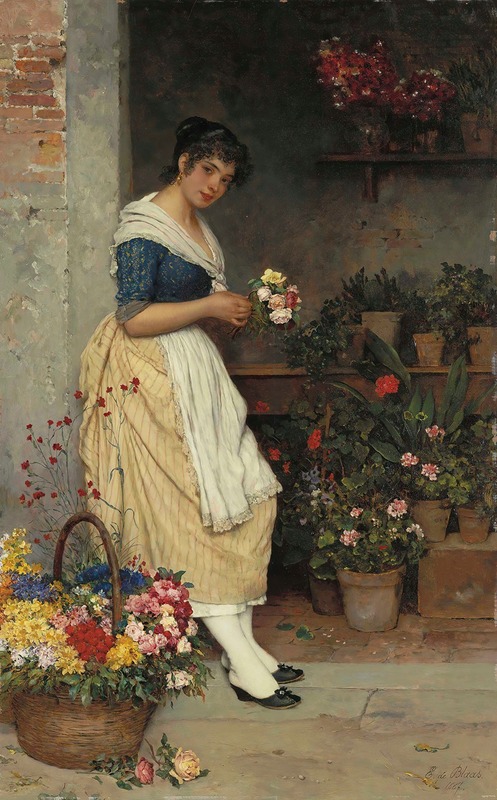
The Fairest Rose
A hand-painted replica of Eugen von Blaas’s masterpiece The Fairest Rose, meticulously crafted by professional artists to capture the true essence of the original. Each piece is created with museum-quality canvas and rare mineral pigments, carefully painted by experienced artists with delicate brushstrokes and rich, layered colors to perfectly recreate the texture of the original artwork. Unlike machine-printed reproductions, this hand-painted version brings the painting to life, infused with the artist’s emotions and skill in every stroke. Whether for personal collection or home decoration, it instantly elevates the artistic atmosphere of any space.
Eugen von Blaas, also known as Eugene de Blaas, was an Italian painter of Austrian descent, renowned for his genre paintings that often depicted scenes of Venetian life. One of his notable works is "The Fairest Rose," a painting that exemplifies his skill in capturing the beauty and elegance of his subjects.
Eugen von Blaas was born on July 24, 1843, in Albano Laziale, near Rome, Italy. He was the son of Karl von Blaas, a well-known Austrian historical painter, and was trained in the arts from a young age. Eugen studied at the Academy of Fine Arts in Vienna and later in Venice, where he developed a keen interest in genre painting. His works are characterized by their attention to detail, vibrant colors, and the ability to convey the subtleties of human expression and interaction.
"The Fairest Rose" is a testament to von Blaas's mastery in portraying the charm and grace of his subjects. Although specific details about the painting's creation and its current location are not widely documented, it is known that von Blaas often focused on themes of beauty and femininity, frequently depicting women in serene and picturesque settings. His paintings typically reflect the social and cultural milieu of 19th-century Venice, capturing the essence of everyday life with a romanticized touch.
In "The Fairest Rose," von Blaas likely employs his signature style, which combines realism with a touch of idealism. His works often feature young women in traditional Venetian attire, set against the backdrop of the city's iconic architecture or lush interiors. The title "The Fairest Rose" suggests a focus on beauty, possibly highlighting a central female figure as the embodiment of grace and allure.
Von Blaas's paintings are celebrated for their technical precision and the warmth they exude. He had a remarkable ability to render textures and fabrics, bringing a tactile quality to his canvases. His use of light and shadow adds depth to his compositions, enhancing the lifelike presence of his figures.
Throughout his career, Eugen von Blaas gained considerable acclaim and his works were exhibited in prestigious venues across Europe. His paintings remain popular among collectors and art enthusiasts, admired for their timeless appeal and the artist's dedication to capturing the beauty of his surroundings.
While specific information about "The Fairest Rose" is limited, it is clear that the painting fits within the broader context of von Blaas's oeuvre, which celebrates the elegance and charm of Venetian life. His ability to convey emotion and narrative through his art continues to resonate with audiences, ensuring his place as a significant figure in the genre painting tradition of the 19th century.







